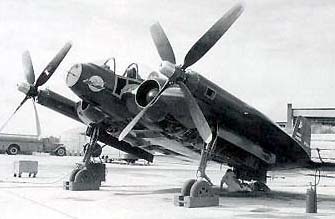
“During its time on the front lines, the battalion saw action in some of the bloodiest battles on the Western Front.”
By Mark Carmichael
THE BRITISH EMPIRE fielded hundreds of battalions to fight for the Allied cause in the First World War. They hailed from places as diverse as the West Indies and India to Australia and New Zealand. Canada alone furnished no fewer than 53 for frontline service. One of these was the 116th Battalion (Ontario County).
Initially raised in the sleepy town of Uxbridge, Ontario in December of 1915, it was established, like so many other units, to replace the heavy losses being suffered on the Western Front.
During its time on the front lines, the battalion saw action in some of the bloodiest battles on the Western Front: Arras, Hill 70, Ypres, and Passchendaele, just to name a few. As a fighting unit within the 9th Brigade of the 3rd Canadian Division, the 116th took a leading role in the Hundred Days Offensive, suffered heavily and were positioned just outside Mons as the guns drew silent on November 11, 1918.
My new book, Heroes of the Great War, Untold Stories of the Men from the 116th Battalion, CEF, tells’ the story of Canada’s history and experiences in the Great War — through the eyes of 25 different soldiers who fought under its colours: from its commanding officer, right down to the ordinary private.
Every battalion in the Great War has its share of heroes; here are a few from the 116th.

Lt. Col. Samuel Simpson Sharpe
One of Canada’s most tragic Great War heroes – Lt. Col. Samuel Simpson Sharpe — wasn’t killed by a shell or bullet; yet he was nevertheless a casualty. A member of parliament for the riding of Ontario North and a lawyer before the war, he was appointed commanding officer of the 116th Ontario Country Battalion. After personally recruiting his officers, NCOs and men from towns and villages dotting his constituency, he trained them for war, bought them overseas and then proceeded to lead them through some of the bloodiest battles in Canadian history. After watching his beloved men fall in one battle after another, Sharpe broke down. He was removed from the battlefield to recover in England and then sent back to Canada, where in Mary of 1918, he took his own life. The circumstances of Sharpe’s death were withheld from the public for years. In fact, it would be almost a century before the tragic circumstances surrounding his death would be officially acknowledged.

Captain Alfred Atkey
Peacefully resting beneath a simple grave marker in a non-descript cemetery in Mississauga Ontario rests arguably the most proficient flying ace to fight above the trenches over the Western Front. Relatively unknown to most Canadians, including historians, Captain Alfred Atkey deserves to be remembered as one of the greatest to ever sit behind the controls of an aircraft. The Toronto native achieved the highest single month of victories when compared against all the greatest aces of the war. In May of 1918 alone, he and another pilot took on 20 German planes in a single engagement claiming five in the encounter. Two days later, he claimed another five in a day and then a further 19 over the following two weeks. No other ace enjoyed such successes in such little time, not Bishop, Barker, Fonck or even the Red Baron himself, Manfred von Richthofen. Atkey ruled the skies above France during the heart of the German Spring Offensive in May 1918.

Lieutenant Bob Hollidge
Imagine if John Rambo was a Canadian Great War soldier. At just 20 years old, replete with youthful exuberance and wanton abandon, the young son of a Vivian, Ontario farmer was seen racing across the pock-marked battlefield at Amiens, bounding into a German machine gun nest, dispatching its crew before continuing on and entering the village of Marcelcave where he proceeded to stroll the main thoroughfare lighting up alleyways and doorways with his red-hot Lewis gun.

The Brothers Broad
Were these three brothers’ the boys he was referring to when Wilfred Owen penned ‘Anthem for Doomed Youth’? Was Owen motivated from the deep losses he saw fighting as a 2nd Lieutenant in the battles of 1917? Was it from seeing far too many close friends being lost to the war, including the three Broad brothers, men he knew from his early years at the Birkenhead Institute? This story connects the war’s greatest bard with three of his classmates and then tells their story, from their immigration to Canada and then their futile struggles to fight the battles of the war, from Somme/Courcelette to Arras/Vimy Ridge and then to the final Hundres Days Campaign.

Corporal Ivor Ernest ‘Jack’ Ayre
Not all heroes fought on the front lines; some, like Ivor Ernest Ayre boosted their comrades’ morale. Known as Jack to his friends, Ayre, entertained the troops with music and comedy routines. The pianist and musical director of The Dumbells, a travelling army Vaudeville act that performed concerts for troops recuperating in the rear, Ayre and his fellow performers toured Flanders and even England with their feel-good revue. After the war, the Dumbells kept the show going with albums and a show on Broadway finally disbanding in 1932. They’d reunite in 1939 however and then again in 1955. The surviving Dumbells would take to the stage again one last time in 1977.
 Mark Carmichael is the author of Heroes of the Great War, Untold Stories of the Men from the 116th Battalion, CEF. Based near Toronto, Ontario, he is a military history blogger and member of the Central Ontario Branch of the Western Front Association. His book can be purchased HERE.
Mark Carmichael is the author of Heroes of the Great War, Untold Stories of the Men from the 116th Battalion, CEF. Based near Toronto, Ontario, he is a military history blogger and member of the Central Ontario Branch of the Western Front Association. His book can be purchased HERE.









